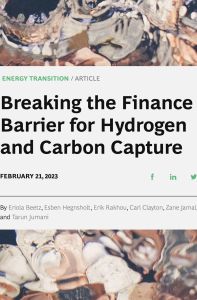
Recommendation
Achieving net-zero carbon emissions by 2050 will require low-carbon hydrogen, as well as carbon capture, utilization, and storage (CCUS) methods. However, the price tag for adopting these fuel alternatives and technologies comes to billions of dollars. Boston Consulting Group professionals assess the current and future landscape for CCUS and low-carbon hydrogen financing, and they examine the risks and rewards for investors, who will find some valuable insights in this thorough study.
Summary
About the Authors
Eriola Beetz et al. are Boston Consulting Group professionals.








Comment on this summary